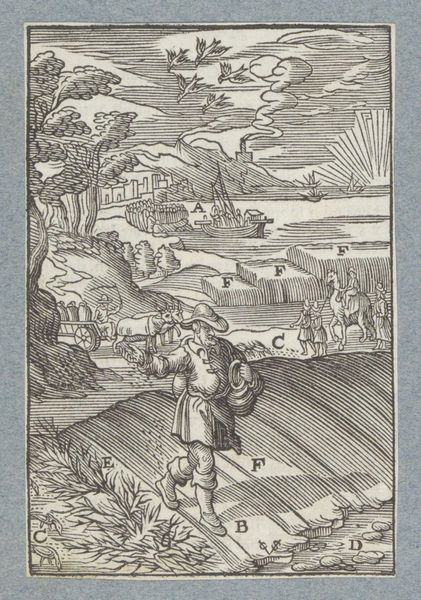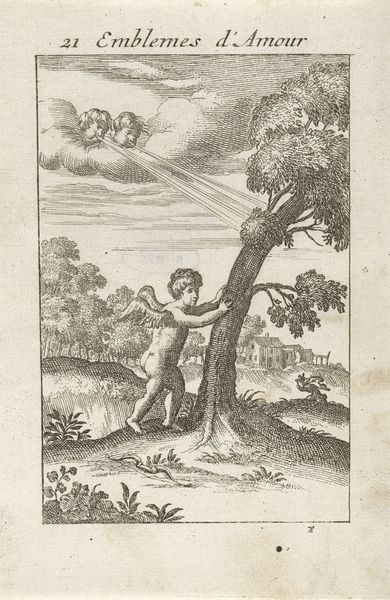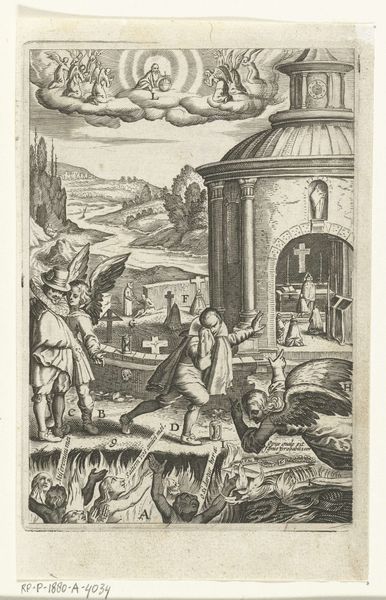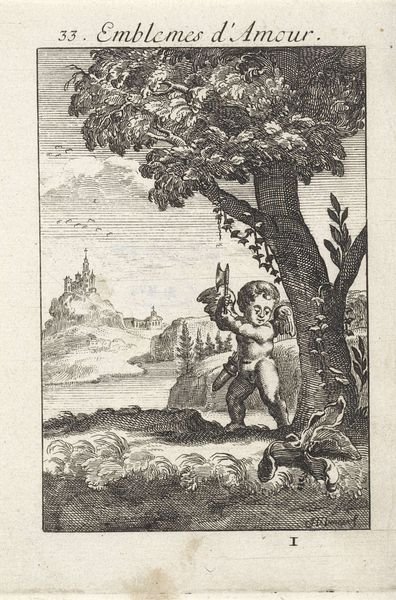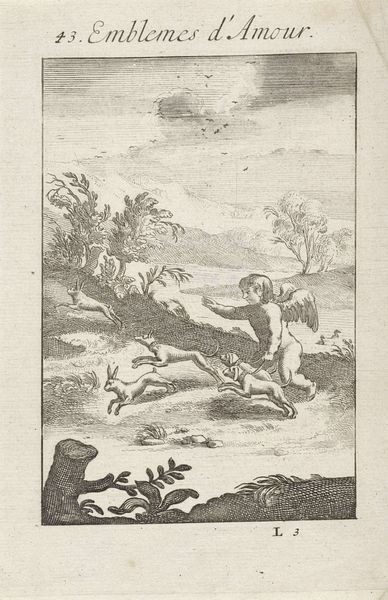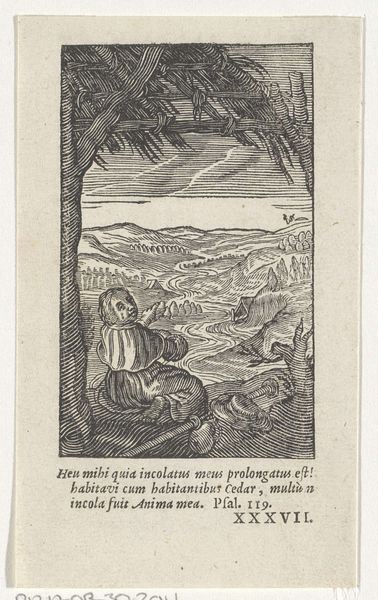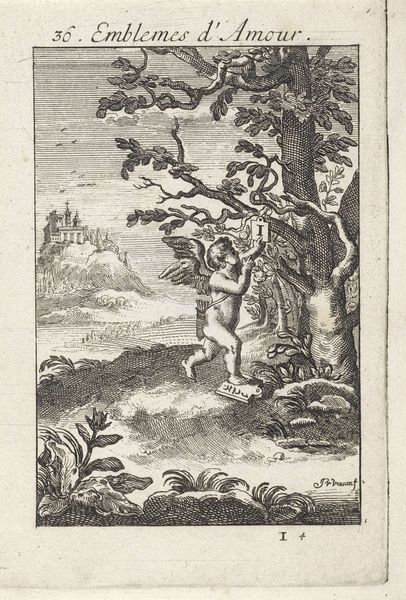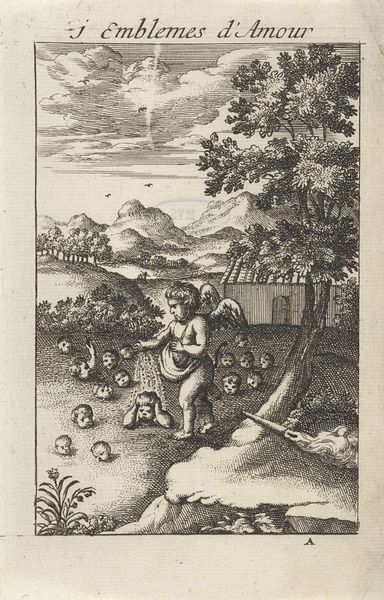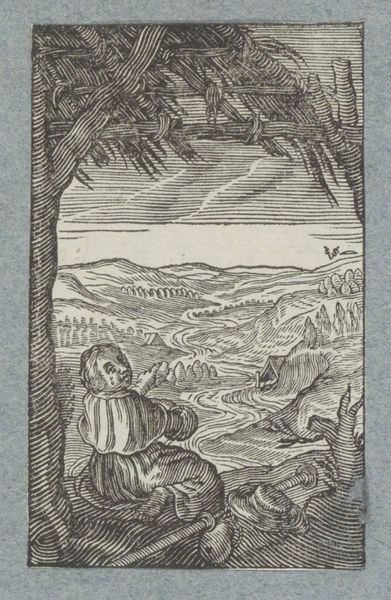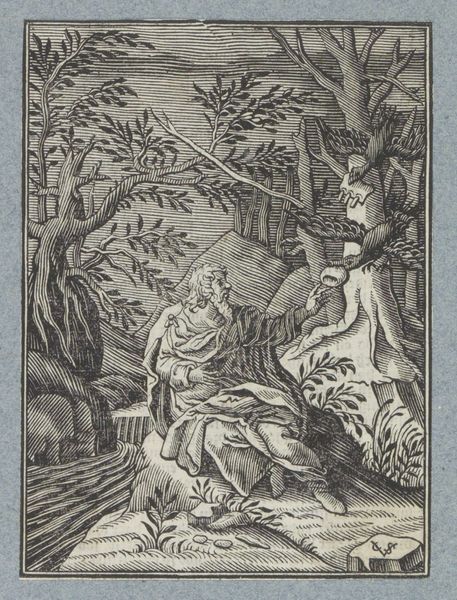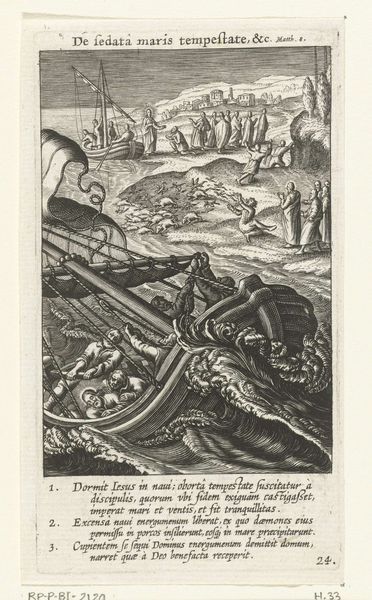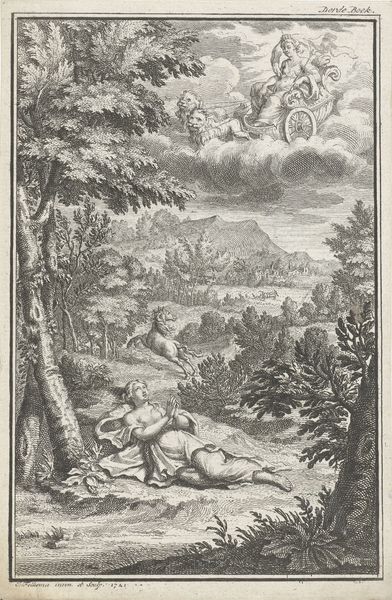
print, engraving
#
narrative-art
#
baroque
# print
#
landscape
#
figuration
#
engraving
Dimensions: height 96 mm, width 56 mm
Copyright: Rijks Museum: Open Domain
Curator: Here we have a 17th-century engraving titled "Kind gekleed als pelgrim zit in hut" by Boëtius Adamsz. Bolswert, created sometime between 1590 and 1624. Editor: The striking thing about this print is the melancholy it evokes despite depicting a child. The child sits pensively within a rustic hut, framed by a sprawling landscape. It feels rather solemn, wouldn't you agree? Curator: Absolutely. Bolswert employs strong contrasts of light and shadow, a characteristic feature of the baroque style. The intricate lines and details, particularly in rendering the landscape and the textures of the hut, are impressive. Look at how the eye is led from the foreground to the distant hills. Editor: Yes, and the symbolism of the child as a pilgrim is quite potent. The pilgrimage was not merely a physical journey, it often signified a spiritual quest. Consider that this was produced in a Europe rife with religious conflict, so this image could reflect the precarious nature of childhood and faith during such times. Curator: I appreciate that reading. Notice how the perspective enhances the sense of scale. We are presented a wide and open vista—nature appears limitless and indifferent, contrasting with the confined, sheltered space inhabited by the figure. The materiality of the engraving technique contributes significantly to the texture too. Editor: Precisely. We should also be aware of how such imagery was consumed. Prints like these often circulated as illustrations for devotional texts or moralizing pamphlets, further shaping social values and acceptable behaviors during the Reformation era. Curator: A poignant image that highlights human perseverance and its complex representation within landscapes and narrative. Editor: Indeed, reminding us that childhood innocence does not exist in isolation, but rather within broader, often tumultuous, socio-historical conditions.
Comments
No comments
Be the first to comment and join the conversation on the ultimate creative platform.
